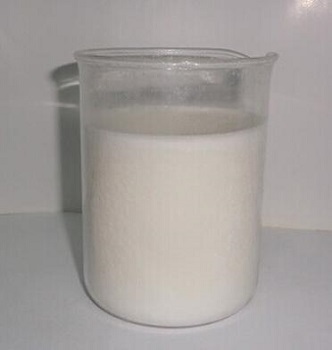|
| Product Name: | Sodium cocoyl isethionate | | Synonyms: | Sodium cocoyl isethionate 85%;SODIUM 2-HYDROXYETHANE COFA SULFONATE;coconutfattyacid,2-sulfoethylester,sodiumsalt;DISODIUM MANGANESE EDTA CONTENT 12.5;Fattyacids,coco,2-sulfoethylesters,sodiumsalts;fattyacids,coconutoil,sulfoethylesters,sodiumsalts;jordaponci;sodiumcocoylisothionate | | CAS: | 61789-32-0 | | MF: | C2Na6O47S20 | | MW: | 1555.23182 | | EINECS: | 263-052-5 | | Product Categories: | Organic chemistry | | Mol File: | 61789-32-0.mol |  |
| | Sodium cocoyl isethionate Chemical Properties |
| | Sodium cocoyl isethionate Usage And Synthesis |
| Description | Sodium cocoyl isethionate is a natural ingredient that is derived from coconuts, specifically coconut oil. The process includes mixing a natural sulfonic acid called isethionic acid with the fatty acids that naturally occur in coconut oil. The mixture is then heated to remove extra water as well as distilled to remove any unnecessary fatty acids. Much like coconut oil, sodium cocoyl isethionate provides incredibly moisturizing properties, especially when compared to other surfactants with similar cleansing and foaming properties. This powerful ingredient is common in many soaps and cleansers as it effectively washes away dirt and oil without leading to dryness or irritation.
 | | Function | Sodium Cocoyl Isethionate is a sodium salt ester, or a fatty acid derived from coconut oil. It is used in cosmetics and personal care products as a surfactant and is often seen in hair care products like shampoos because of its ability to help water to mix with oil and dirt, allowing them to be more easily rinsed away. Sodium Cocoyl Isethionate is also seen as an ingredient in a variety of soaps and cleansing products. As a surfactant, it creates a wet feeling, it solubilizes oils and reduces surface tension, and can aid in foaming as well.
| | Uses | Sodium Cocoyl Isethionate is an ingredient derived from coconut oil. In cosmetics and personal care products, Sodium Cocoyl Isethionate is used primarily in the preparation of bath soaps and cleansing products. This ingredient is also used in the formulation of shampoos, tonics, dressings, other hair grooming aids and skin cleansing preparations.
| | Benefit | Excellent foam density and foam stability
Has very good lime soap dispersion and surface activity
Leaves no soap scum as it is very hard water tolerant
Compatible with soaps and anionic, non-ionic, and amphoteric surfactant
Excellent lathering; exceptionally mild, provides soft skin after-feel
Can be used in clear / pearlescent gels
| | Side effects | The CIR has approved the use of Sodium Cocoyl Isethionate in concentrations up to 50% for rinse-off products, and 17% for leave-on products. Although it is considered generally mild, all surfactants can be irritants, and tend to be more irritating at higher concentrations. Sodium Cocoyl Isethionate has been specifically shown to cause some eye irritation at higher concentrations. According to the Cosmetics Database, it is also linked to organ-system toxicity (the American College of Toxicology reported that one or more animal studies showed broad systemic effects at high doses), although the EWG notes lesser concerns regarding this side effect, and ultimately finds it to be a low hazard ingredient.
| | Manufacture | Sodium cocoyl isethionate is produced by reacting sodium isethionate with coconut fatty acids followed by neutralization with sodium hydroxide. The mixture is heated to remove water and distilled to remove excess fatty acid. Sodium isethionate is originally made by ethoxylation of sodium sulfites and their derivatives. | | Chemical Properties | Sodium cocoyl isethionate is the Sodium salt of the coconut fatty acid ester of Sisethionic acid which functions as a surfactant-cleansing agent (Nikitakis, 1988).
Sodium cocoyl isethionate is in the form of a fine white powder that consists of active ingredient plus minor impurities and has a mild odor (Estrin et al., 1982b). Sodium Cocoyl lsethionate i s stable at a pH of 6-8 and hydrolyzes outside of this pH range (Hunting, 1983). | | Application | Sodium cocoyl isethionate is used as a surfactant-cleansing agent in cosmetic formulations. It is slightly to practically nontoxic, with an oral LD50 of 24.33 g/kg for rats. Dermal application of 1.0-36.0% w/w aqueous Sodium Cocoyl lsethionate to rats for 28 days did not produce any significant toxic effects. | | Uses | sodium cocoyl isethionate is a mild, high-foaming surfactant. It leaves the skin with a soft afterfeel, which is why it is sometimes referred to as "baby foam". This compound is a good sulfate-free alternative for people who want to avoid commonly known surfactants such as sodium lauryl sulfate (SLS). | | Preparation | Sodium Cocoyl lsethionate is preparedvia the following reaction: sodium isethion- ate is reactedwith either the fatty acid mixture from coconut oil (Hoffmann, 1990)or the corresponding chlorides to form Sodium Cocoyl lsethionate (Hunting, 1983). The sodium isethionate was first prepared by adding 1 mole of ethylene oxide to sodium bisulfite. | | Flammability and Explosibility | Nonflammable | | Safety | The Cosmetics Ingredient Review has deemed the ingredient safe for use in cosmetic products when formulated to be non irritating. Whole Foods has deemed the ingredient acceptable in its body care quality standards. Clinical research has shown that the ingredient is typically not a skin irritant or sensitizer.
sodium-cocoyl-isethionate |
| | Sodium cocoyl isethionate Preparation Products And Raw materials |
|